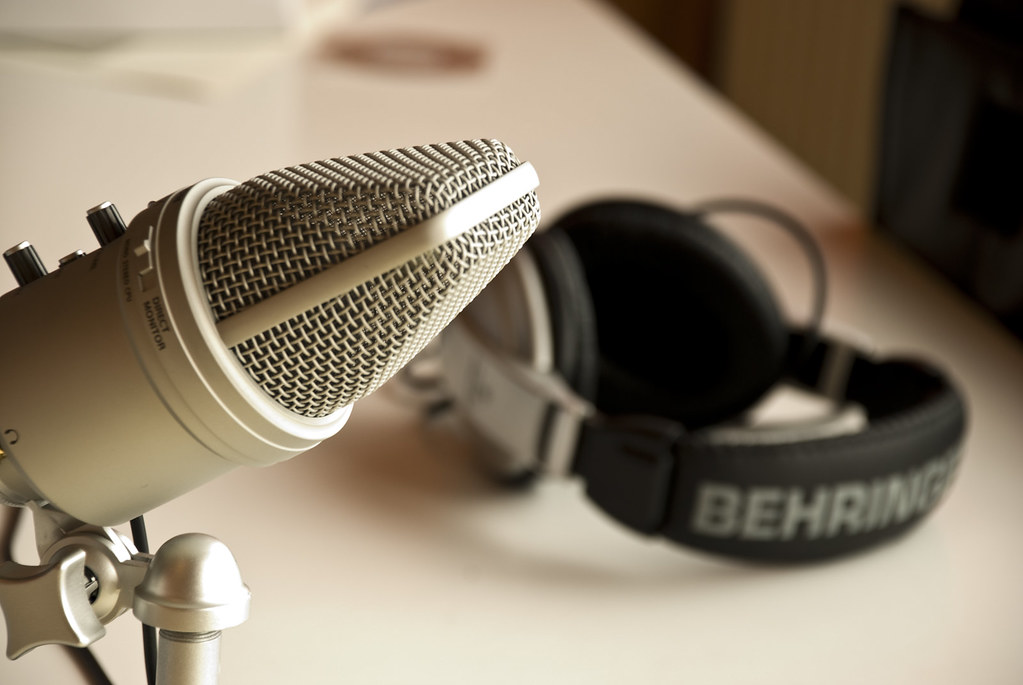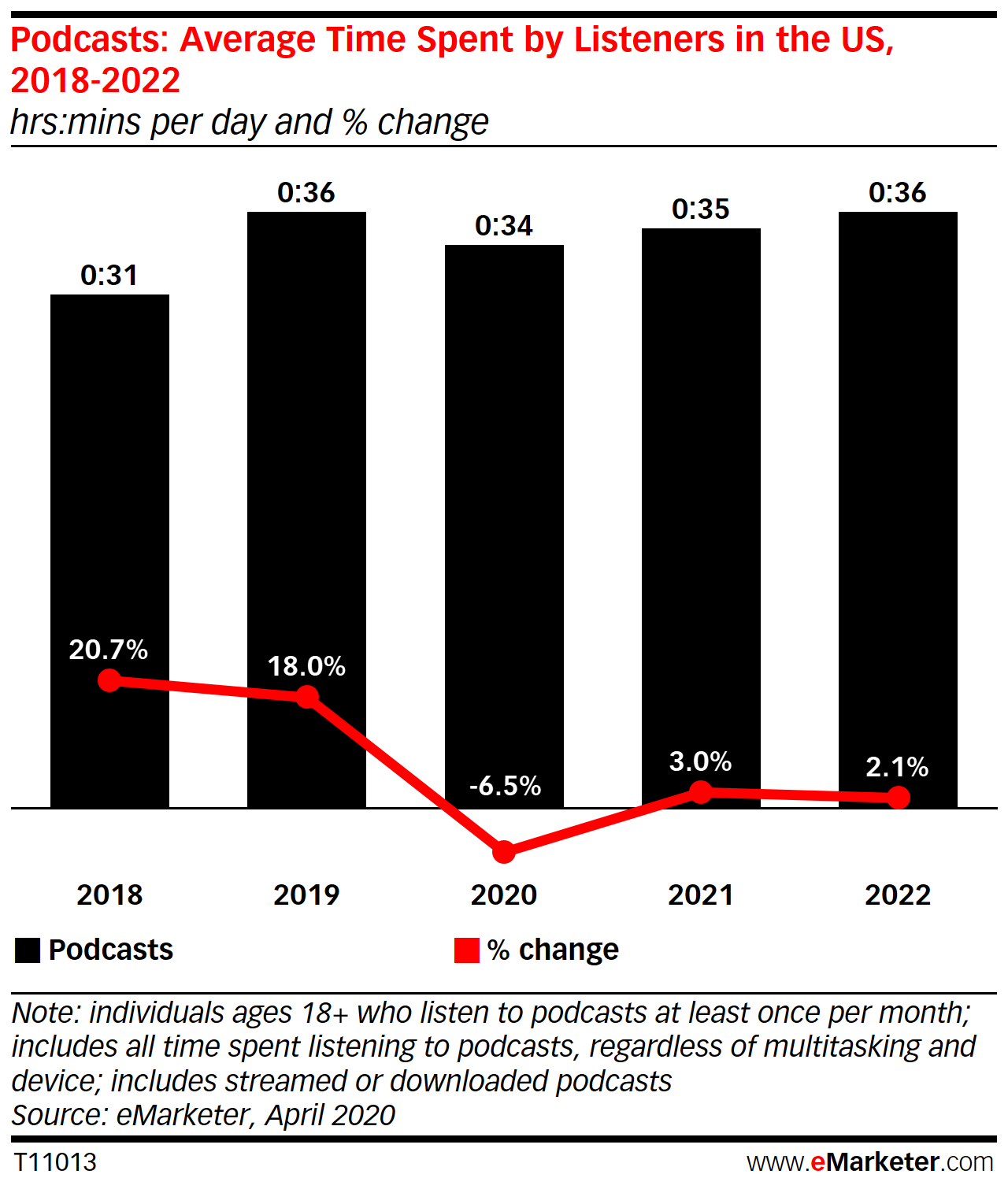
Podcasting, like many other industries during the pandemic, is seeing a strong shift over the past six months, which has resulted in more shows and fewer listeners. While some avid podcast fans have taken solace in listening to their favorite shows to stay connected, many listeners who previously had podcasts built into their routines have turned to other forms of media consumption in the absence of a daily commute.
In April, global podcast listening was up 42% (and 53% in Europe) as lockdowns began in the U.S. and other parts of the world. Although listening in the U.S. went down 20%, certain verticals remained strong, such as true crime, music interviews, science, medicine, religion and spirituality, and self-improvement.
Prior to the pandemic, the podcasting industry was experiencing a boom, with experts projecting marketers to spend over $1 billion in advertising by 2021. The pandemic has thrown a wrench into the industry’s growth. In the months of continued isolation and social distancing, E-marketer recorded its first contraction in time spent listening since it began tracking in 2015 but estimates a rebound in the coming years.

The pandemic may have temporarily stunted the growth of listeners, but the team at Castos is witnessing a new trend emerging: individual creators and businesses are finding the time and inspiration for firing up new shows. From April until now, the podcast hosting company has seen a 300% increase in new trials, and a 102% increase in MRR over last two years. Castos currently has nearly 2,000 paying customers.
The company started in 2017 after non-technical founder Craig Hewitt acquired the Seriously Simple Podcasting plugin from its original creator, Hugh Lashborooke. Hewitt expanded the platform to allow both WordPress and non-WordPress users to create podcasts, and has grown the business to support seven remote, full-time employees. He attributes most of the industry’s fresh infusion of new shows to companies that are exploring new ways of getting into customers’ homes.
“Many brands are finding that traditional marketing efforts are falling short in these turbulent times, but great content that serves a specific audience always has an impact,” Hewitt said. “Many companies are pivoting from more conventional paid acquisition approaches to building stronger and longer lasting relationships with their audiences through podcasting.”
Hewitt said he expects the trend to continue after the pandemic subsides. Many of the companies Castos works with have reported that podcasting is likely to become a core part of their marketing efforts for the long haul, in both B2B and B2C environments.
“Like the move to remote work many companies are seeing that podcasting isn’t hard to do, and provides great returns for them in terms of branding and as a top of funnel customer acquisition strategy,” Hewitt said. “Whether in the midst of Coronavirus or afterwards this will continue to be true and the momentum that podcasting has gained should continue.”
Approximately 70% of Castos’ hosting customers are using the Seriously Simple Podcasting plugin. The hosting platform is unique in the podcasting market in that it automates YouTube Republishing, transcriptions, and Headliner integration, while allowing users to manage it all via WordPress. Castos recently hired Matt Medeiros, an experienced podcaster and YouTube creator, to help new podcasters keep pushing with their shows and convert into longterm customers. He shares Hewitt’s optimistic outlook on the future of the industry.
“There were early reports that podcast download stats dropped in tandem with listener commute times, but I think that opened up opportunity for creators to really capture their most loyal audiences,” Medeiros said.
“The other side of that coin are the businesses that needed to stay top of mind with the customers while their doors were closed. Spinning up a podcast is a perfect way to do that. Podcasts come in all shapes and sizes, so building one that’s tailored to your customers is what really matters and will survive through our post-pandemic ‘new normal.’”
Portability is the common denominator for podcasts – people are listening from their desktops, mobile devices, and smart speakers, using a variety of different apps. But audiences vary in their appetites for staying informed, educated, and entertained through the podcasting medium. Medeiros advises both new and established podcasters to find out what kind of show their customers want them to produce.
“Podcasts don’t have to be cookie cutter,” Medeiros said. “If you spend time getting feedback from your customers or audience, you want to tailor the show around that. Do they like 15 minute news highlights or 3 hour 1-on-1 interviews? Do they want hard news or laugh out loud entertainment? What’s in it for them as a listener? What’s in it for you as a creator?
“At the end of the day, the biggest opportunity for podcasting is that it opens the door to having your favorite creators and fans in the same room every time you publish an episode. It’s a chance to (literally) have a conversation and build trust through creative storytelling – your brand’s digital handshake.”